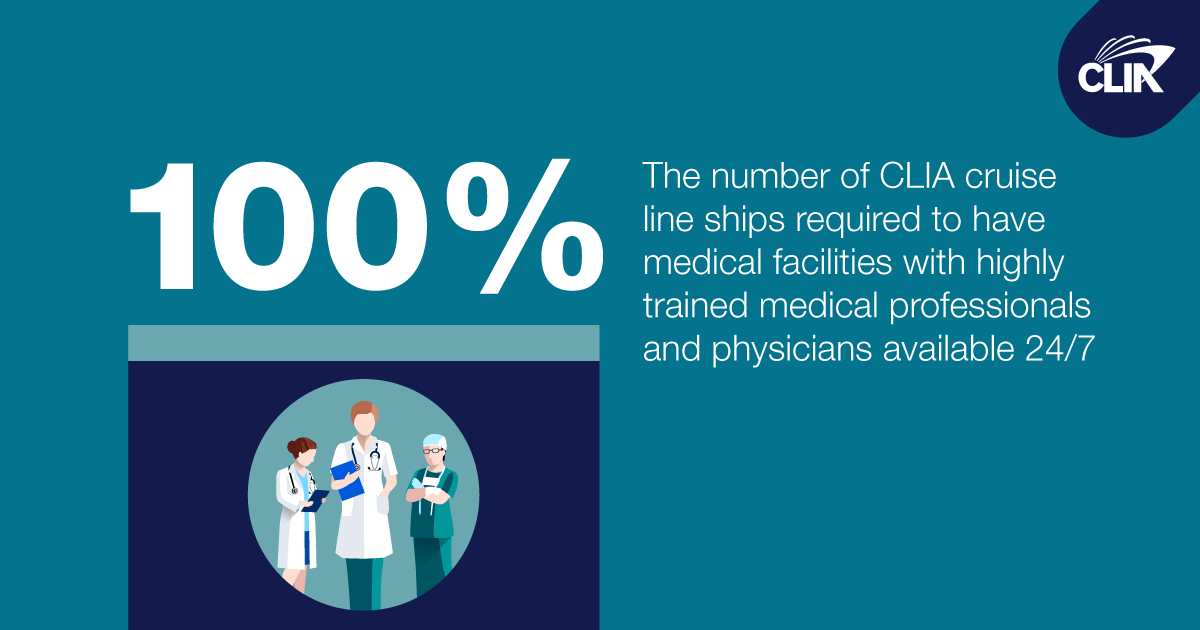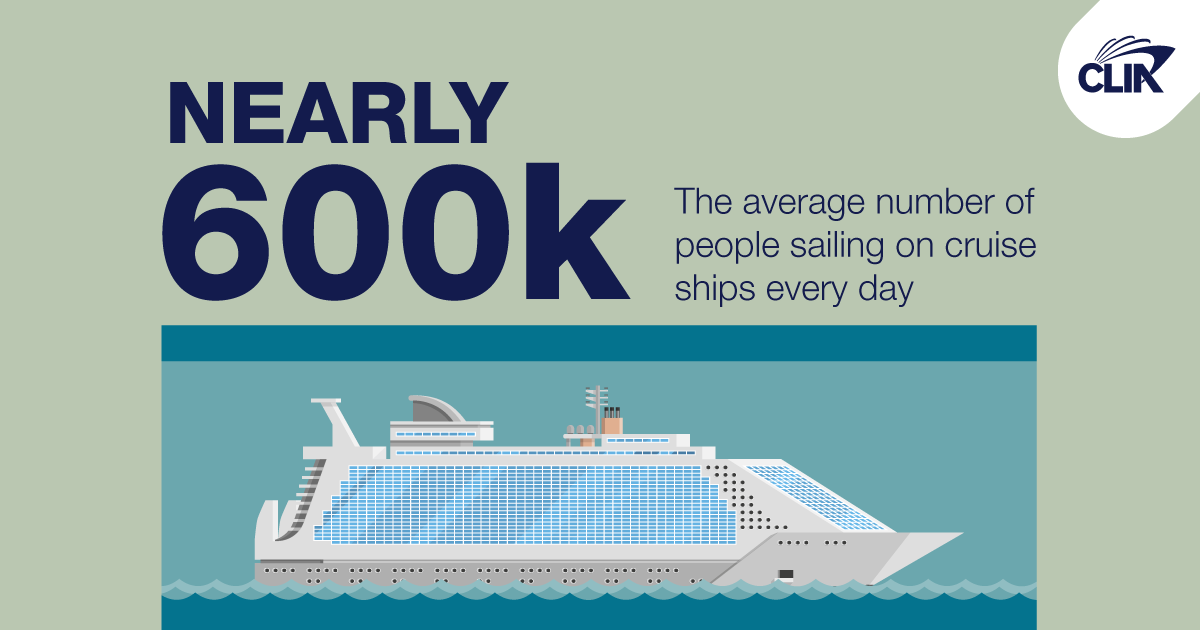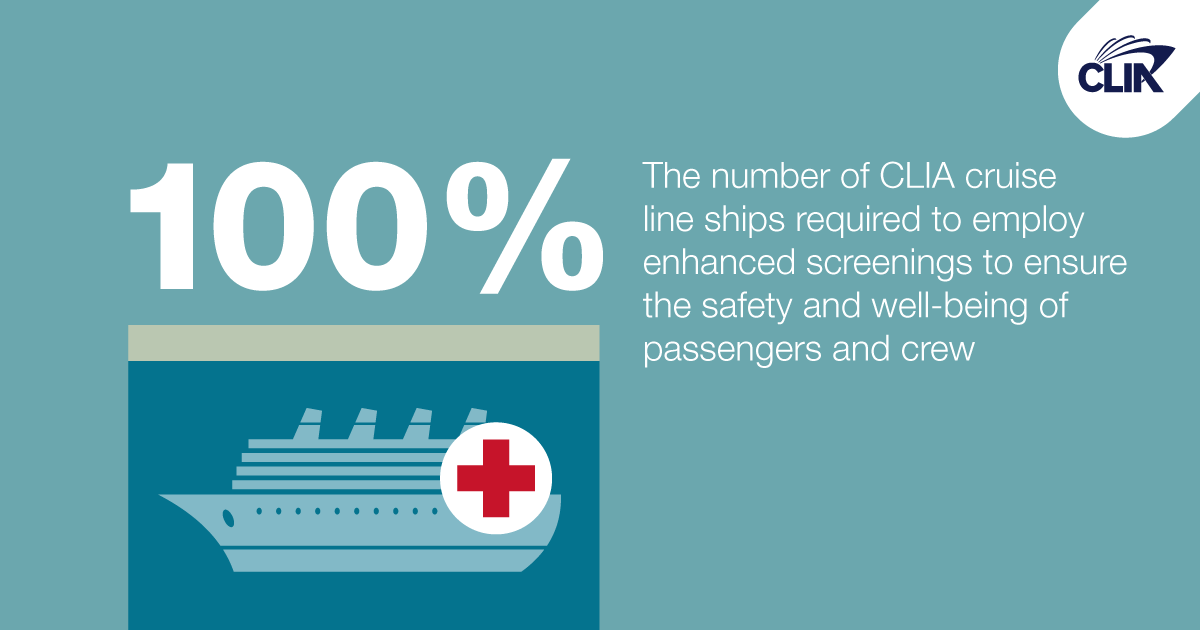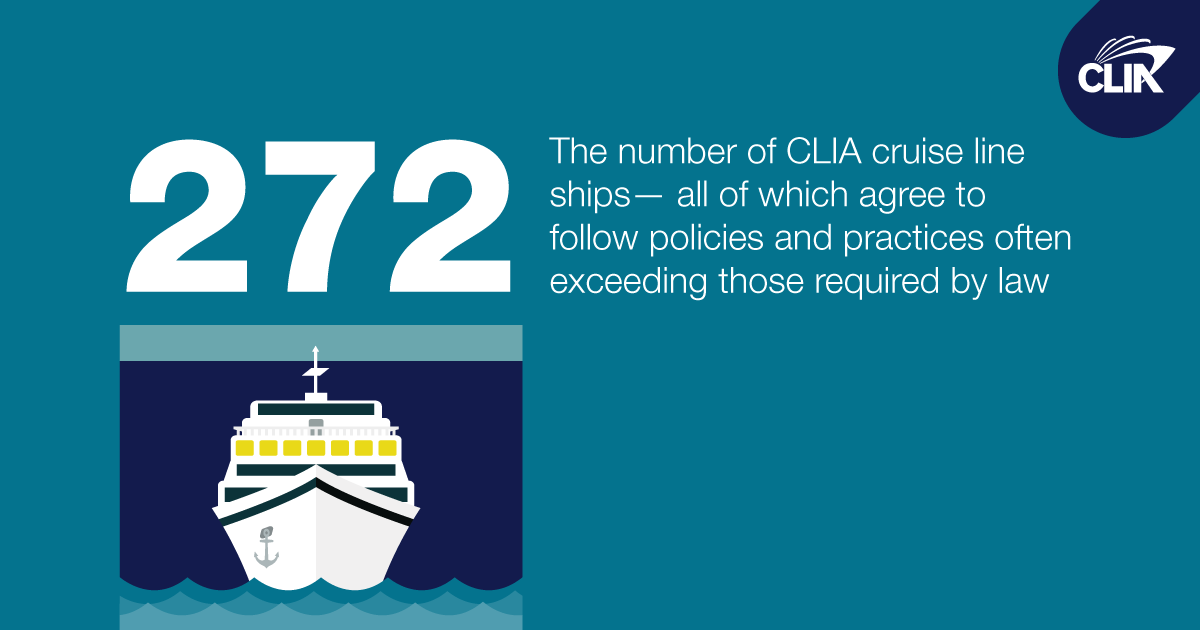- Press Release/Official Statement on COVID-19 as of 3/13/20
- Press Release: The FCCA and CLIA Confirm US Ports Are Open to Returning Cruise Ships
- COVID-19 Frequently Asked Questions
- COVID-19 & Cruising: Get The Facts (Fact Sheet)
Infographics
General Information on Cruise Sanitation, Safety, Cleanliness and More
Public Health and Medical:
https://cruising.org/about-the-industry/policy-priorities/Public%20Health%20and%20Medical
Cruise lines go to great lengths to support the health and wellness of all onboard. From cleaning practices to passenger screening and public health inspections, cruise lines work vigorously to keep passengers and crew healthy.
Sanitation – Safety – Security
Learn more about standards for the safety of cruise ships and sanitation procedures.
Safety at Sea:
https://cruising.org/about-the-industry/policy-priorities/safety-at-sea
- Crewmember Training: Crewmembers receive robust training in safety, security and first aid to prevent and respond to potential emergency situations.
- Heavily Scrutiny: Cruise ships are among the most scrutinized vessels at sea. With oversight beginning at design and construction, the International Maritime Organization (IMO), flag and port state authorities, and classification societies provide strict safety standards and oversight throughout a ship’s operations.
- Constant Improvement: CLIA and its Cruise Line Members constantly work to improve safety by reviewing operational procedures to improve safety processes and technology. With new polices implemented and continual meetings with an Independent Panel of Experts comprised of top maritime and transportation professions to provide advice on measures to enhance safety, the cruise industry is always looking to improve.
- Precautions: Every cruise ship must be equipped with enough survival craft, including life boats and life rafts, to accommodate at least 125 percent of the number of persons on board. In addition, all survival craft must be tested and meet rigorous international guidelines.
Cruise ships today are the safest that have ever sailed, thanks to the rules, regulations, and technological innovations that govern their design.
Cruise Industry Regulation
https://cruising.org/about-the-industry/policy-priorities/cruise-industry-regulation
The cruise industry is one of the most heavily regulated industries with robust, clearly defined standards. The average ship undergoes dozens of announced and unannounced safety inspections per year, involving hundreds of man-hours and the implementation of thousands of specific requirements set by the International Maritime Organization (IMO) and other authorities.
The cruise industry has a long history of ongoing review and improvement, with Cruise Lines International Association (CLIA)’s policies often exceeding requirements of international law. Providing for the safety of passengers and crew is, at all times, the industry’s top priority.
